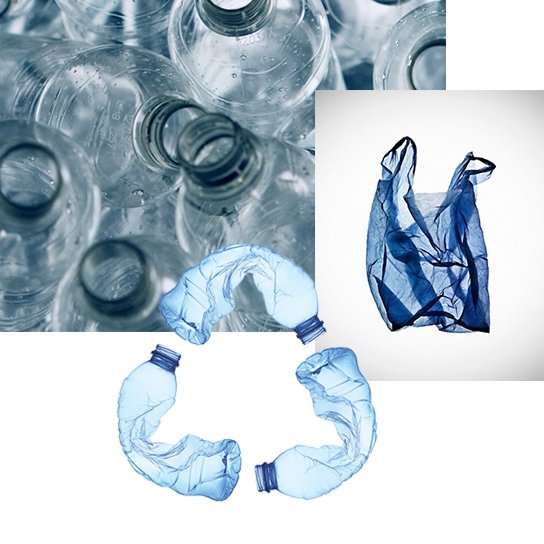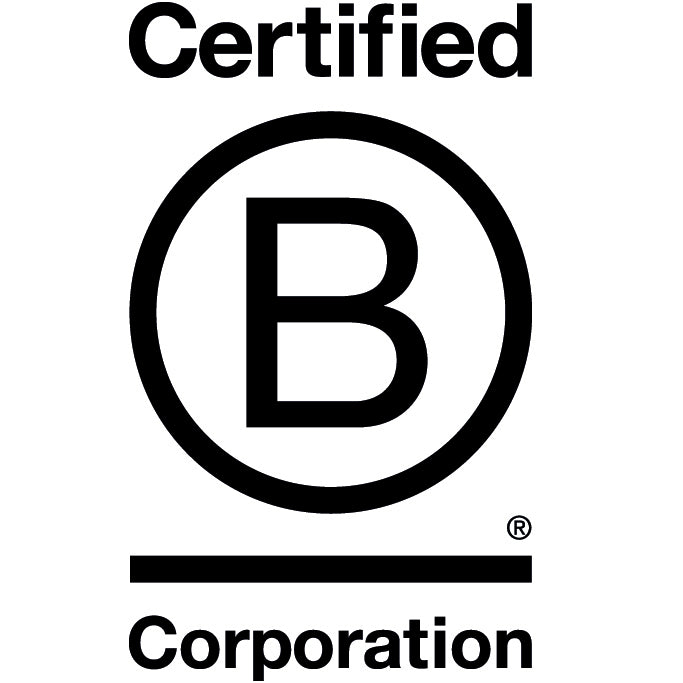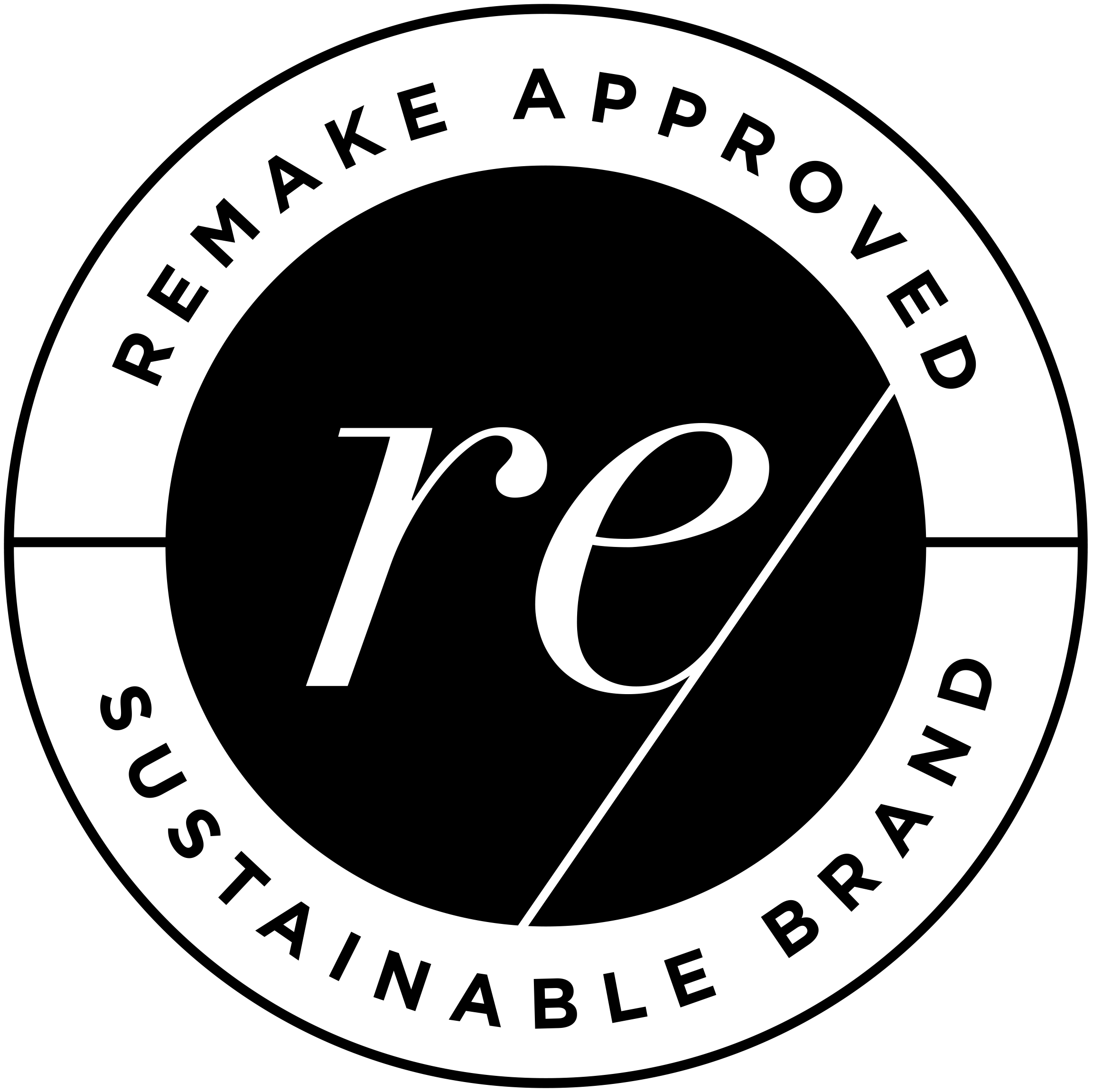
Can I Recycle This?
Today, we are all striving to be more conscious, mindful humans. Part of that is being more thoughtful about how we consume and the legacy we leave.
For years we have felt pretty good about our attempts to recycle plastic, but recent revelations about plastic's true recyclability has led to much consternation. With so much in our society dependent on plastic, a problem that isn't going away overnight, questions about what to do loom large.
Will this item in the recycle bin really be recycled, or, is it headed for a trash barge in the Far East?
Are those 'compostable' and 'biodegradable' shopping bags and mailers REALLY compostable?
When we throw something away, is there really an 'away-away'?
The answer is in the numbers.


There is a common misconception that the ubiquitous chasing arrow sign stamped or printed on our plastic refuse means the item is recyclable. But, the truth lies in the tiny number enclosed in those arrows.

Our friends at Positive Luxury recently broke it down in their article, The Glossary: Which Plastics Can Be Recycled.
Below is their guide (which we now have posted above our recycle bin) to what those tiny numbers really mean.
No.'s 1 -2 RECYCLE


1 is PET (Polyethylene Terephthalate)
PET is one of the most commonly used plastics in consumer products and can most often be found in water and other drink bottles as well as food packaging. It’s recycled into polyester fibres and other lower grade products like carpets.
The good news is that PET can be recycled. The bad news is, it can be recycled into clothing that then sheds millions of tiny petroleum-based microfibers into our oceans and waterways through residential and commercial laundry facilities.
Efforts are underway to ensure new washing machines include microfiber filters, but in the meantime, you can help by purchasing products like Guppy Friend that captures microfibres during the wash cycle before they head into our water systems.
2 is HDPE (High-Density Polyethylene)
HDPE is a harder plastic that is used for detergent and oil bottles, milk containers, hair care products, and some plastic bags. HDPE is the most commonly recycled plastic and it’s a relatively simple and cost-effective process to recycle HDPE plastic for secondary use. The EU’s 2008 Waste Framework set a target recovery and recycling rate of plastic for 22.5% which the UK has surpassed by achieving 46.2%. Meanwhile, in America, only 29.6% of plastic is recycled.
No.'s 3, 4, 5 - MAYBE

It is important to check with your municipality to see if they recycle these products.
It's a bad idea to put something in the recycling bin if you are unsure. If materials that can’t be recycled find their way into a recycling facility, they will contaminate entire batches, meaning, otherwise recyclable materials will head to the landfill.
As The Recycling Association says, “if in doubt, throw it out.”
3 is PVC (Polyvinyl Chloride)
PVC is used for all kinds of pipes and tiles but is most commonly found in plumbing pipes. It is only sometimes recycled, because it’s harmful if ingested so should not come in contact with food items.
4 is LDPE (Low-Density Polyethylene)
LDPE is used in squeezable bottles, shrink wraps, shopping bags and the bags used for packaging bread. Some clothing and furniture also contain this type of plastic. While LDPE has not been commonly recycled, many places are beginning to accept the material in their recycling programs. When recycled, LDPE plastic is used for lumber, landscaping boards, garbage can liners and floor tiles.
5 is PP (Polypropylene)
Polypropylene plastic is resilient and thin. It serves as a barrier against moisture and is used to make bottle tops, yoghurt containers, and straws. Polypropylene is recyclable through some recycling programs, but only about 3% of PP products are currently being recycled in the US. Recycled PP is used to make landscaping border stripping, battery cases, brooms, bins, and trays.
No.'s 6, 7 - NO

6 is PS (Polystyrene) - Styrofoam
Polystyrene is a lightweight plastic that is used in a variety of ways. Most often It is used to make Styrofoam. It can commonly be found in cups, take-out containers, egg cartons and foam packaging. Polystyrene is notorious for easily breaking down and polluting the environment. It may also leach styrene, a possible human carcinogen, into food products. Cities across the globe are working on complete bans on polystyrene and many companies eliminating their use.
7 - Everything Else
The number 7 category is for everything else and any combination of the above plastics. Number 7 plastics are used to make baby bottles, cups, water cooler bottles, and car parts. The infamous BPA, a known endocrine disruptor, also falls into this group.
A current trend towards bio-based polymers like corn starch or algae are also categorized as #7 but will have “PLA” or "PBAT" near the chasing arrows symbol, claiming they are compostable. Unfortunately, anything with a "P" is a petrochemical based product and is not truely compostable.
If they claim recyclability, they have been tested in extreme conditions with the perfect balance of heat and moisture rarely achievable in residential or commercial composts.
According to an article in The Smithsonian, 'compostable' and 'biodegradable' bags exhumed from a compost 3 years later, sadly, look and perform as good as new.

Image of a 'biodegradable' bag after 3 years submerged in soil carrying 10 lbs of groceries.

Are the rules global?
Most countries use the same 1 to 7 recycling codes above, including all of Europe, Australia and America. Some countries have adopted their own distinct codes, like China, where they have a comprehensive list of 140 different codes to identify various types of plastic.








Leave a comment
This site is protected by hCaptcha and the hCaptcha Privacy Policy and Terms of Service apply.